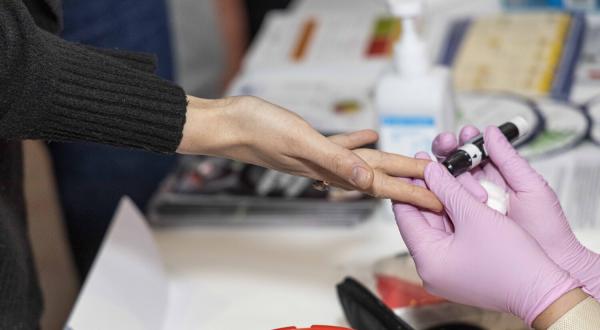RSU research project among national scientific achievements of 2017
The Latvian Academy of Sciences (LAS) has selected twelve greatest achievements of Latvia’s science in 2017. The list of twelve also contains the research on the impact of persistent viral infections on the development of nervous system diseases, which is a joint research project of A. Kirhenšteins Institute of Microbiology and Virology and the Joint Laboratory of Electron Microscopy of the Institute of Anatomy and Anthropology.
The research has led to the conclusion that viruses may integrate into cell-genome and the infection may be inherited from one generation to the next.
The participants
- A. Kirhenšteins Institute of Microbiology and Virology, lead researcher (Dr. habil. biol.) Svetlana Čapenko
- A. Kirhenšteins Institute of Microbiology and Virology, acting researcher (Dr. med.) Santa Rasa
- Head of A. Kirhenšteins Institute of Microbiology and Virology, professor, lead researcher and LAS academician, Modra Murovska
- Lead researcher of the Joint Laboratory of Electron Microscopy (Dr. med.) Sandra Skuja
- Head of the Joint Laboratory of Electron Microscopy, professor and lead researcher (Dr. habil. med.) Valērija Groma
the primary infection, beta herpesviruses (HHV-6 and HHV-7) may persist in a dormant or latent form in humans throughout the lifetime, nevertheless their impact on human health has not been sufficiently studied and the factors provoking virus reactivation have not been identified.
Considering that a virus can remain dormant inside nervous tissues, the study was devoted to the examination of the association of persistent herpes virus infection with the development of neurological disorders (encephalopathy, fibromyalgia and myalgic encephalomyelitis /chronic fatigue syndrome – ME/CFS). Persistent HHV-6 and HHV-7 viral infection and its activation was more common for fybromialgic and ME/CFS patients; beta herpesviruses infection markers were frequently detected in case of encephalopathy, demonstrating that HHV-6 accounts for the most significant changes in the white matter regions of glial cell localization, including oligodendrocytes. As the result of such changes, the virus affects transmission of nerve impulses. The study of myalgic encephalomyelitis /chronic fatigue syndrome for the first time revealed that HHV-7, similarly as HHV-6, might integrate into the cell genome and result in vertical transmission from one generation to another.
It should be noted that RSU researchers were involved in another significant research project of 2017, i.e. the development of a new compound E1R intended for the improvement of memory and for the treatment of epilepsy. E1R was synthesised in the Latvian Institute of Organic Synthesis. The discovery of the derivative is the result of the joint efforts of Edijs Vāvers who obtained his PhD in pharmacy in 2017, Maija Dambrova, professor at RSU Faculty of Pharmacy, Department of Pharmaceutical Chemistry and academician of the LAS and other researchers (Līga Zvejniece, Baiba Švalbe, Maksims Vorons, Ivars Kalviņš, Ilga Misāne, lmārs Stonāns).
The tradition of looking back at the biggest scientific breakthroughs and significant achievements in Latvia’s science was commenced 15 years ago - in 2002. In the course of time, the annual scientific achievement recognition award introduced by the LAS has gained much popularity. Currently it is the one of the most prestigious scientific awards in Latvia, and the excellence and uniqueness of the nominated national and global projects, research, monographs and practical scientific tests speak for themselves.
Related news
 RSU Health Day attracts many first-time donors and large number of student research groupsFor RSU Employees, For Students
RSU Health Day attracts many first-time donors and large number of student research groupsFor RSU Employees, For Students


